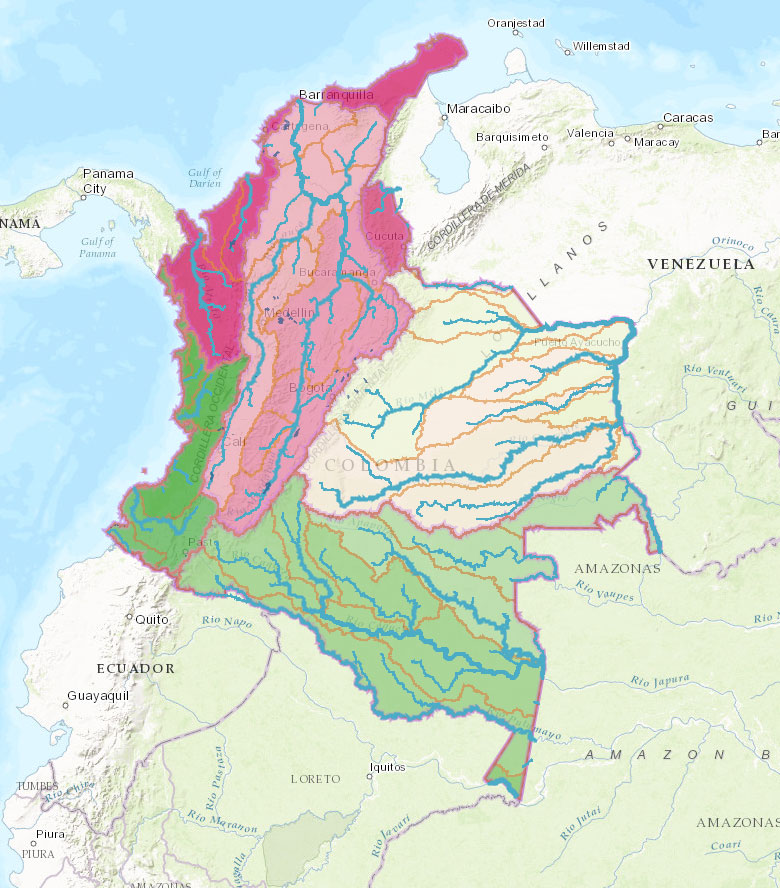Colombia is the world’s 24th country with the most plentiful water resources on the planet, yet experts believe that within 35 years it will face serious water shortages, reported El Espectador on Wednesday.
In 1990 Colombia was ranked as the fourth country with the greatest water wealth in the world. Fast forward to 2017 and Colombia is now ranked 24th.
According to a recent study published by the World Economic Forum, the mismanagement of Colombia’s waters has placed it in the list of countries that by the middle of this century – that is, in 33 years – will suffer economically from water shortages.
Colombia is flanked by two oceans, the Atlantic and the Pacific; the Choco province is the area with the second highest rainfall in the world; the Amazon, which is the largest river on earth, cuts through the south of the country; and the peaks an glaciers of its Andes mountains provide a fresh water source for the whole country.
So, what has happened?
Deforestation, illegal mining and climate change have turned rivers, streams, and glaciers into arid scars.
In 2014, 140,000 hectares of forest was cut down in Colombia. The following year a further 125,000 hectares were destroyed, according to state environmental institute, IDEAM.
Colombia has also witnessed a major rise in deforestation following the departure of the Marxist-inspired rebels from their former territories of control, reported Colombian magazine Pacifista in February.
An area as large as 40,000 hectares could be affected as criminal groups seek to fill the political vacuum left behind by the FARC and begin cultivating illegal crops.
Deforestation on the rise in Colombia after FARC ends ‘policing’ of jungles
Excessive growth of the population in certain areas has generated a “water stress”, that is, a higher demand for water greater than the ecosystem can provide, according to the World Economic Forum report.
In the National Water Study conducted by Ideam in 2014, 318 municipalities were judged to be at risk of water shortages due to this “water stress”.
Of these, there are eight municipalities with a notably high vulnerability, including two capitals: Pasto, in the Nariño province, and Santa Marta in Magdalena province.
Rising temperatures due to global climate change have reduced Colombia’s glaciers almost 20% over the past six years, according to the country’s meteorological institute.
The glaciers, which were once a continuous stretch of ice and snow across the Andes, one of the highest coastal mountain ranges in the world, are shrinking at a rate of 3% annually.
The El Niño weather phenomenon, reduced precipitation, and loss of snow has accelerated the process, according to Ricardo Lozano, the former director of Colombia’s meteorological institute IDEAM.
Colombia lost almost 20% of its glaciers in past 6 years: survey
The latest survey confirmed previous estimates that Colombia will be without any icy peaks on its Andes mountains within approximately 25 years.
The shrinkage of these natural reservoirs will manifest mainly in the rural water supply, as farmlands and crops will begin to experience more drought.
But the scarcity of water for humans is not the only issue. Low water levels will impact crucial human activities, in particular agriculture, where water is vital for rearing livestock and growing crops.
In this scenario we see a vicious circle emerge. We saw deforestation rise in an attempt to create more farmland and to produce food. But through deforesting the river ecosystems were damaged, which made access to water more difficult and, therefore, hinders our food production, which leads to even more deforestation to plant more acres of food. Then the cycle repeats.
Current demographic trends predict that over the next 50-75 years the world’s population will grow by 3 billion, according to the World Economic Forum.
An increase in the world’s population implies a greater consumption of drinking water and, in turn, an increased probability that existing water sources will be contaminated by human action.
2.5 billion people (36% of the world’s population) are currently living in areas under “water stress”.
Major innovation and investment will be needed in Colombia, and indeed globally, to combat the phenomenon of climate change and conserve its water resources for future generations.






